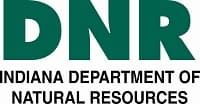Indiana DNR Submits Early Migratory Bird 2013 Season Dates

The 2013 early migratory bird season dates have been submitted to the U.S. Fish and Wildlife Service by the Indiana DNR as listed below.
As in other years, these dates are not final until the USFWS approves them, which typically happens by the end of August.
The DNR is also requesting changes to bag and possession limits. Under the request, migratory bird possession limits would increase from twice the daily bag limit to three-times the daily bag limit. The DNR has also asked to increase the daily bag limit for the September teal season from four to six.
The season dates and limit requests are both within the framework provided by USFWS, so no changes are anticipated. A later release will notify of approval or change.
Indiana’s requested seasons have never been altered by USFWS after submission; however, there is always the slight possibility of change. Therefore, the dates below should not be interpreted as being final.
Licensing information is at hunting.IN.gov.
- Mourning doves; Statewide, 15-bird bag/45-bird possession limit: Sept. 1–Oct. 13 and Nov. 8–Dec. 4.
- Sora rails: Statewide, 25-bird bag/75-bird possession limit: Sept. 1–Nov. 9.
- Woodcock: Statewide, three-bird bag/nine-bird possession limit: Oct. 15–Nov. 28.
- Common snipe: Statewide, eight-bird bag/24-bird possession limit: Sept. 1–Dec. 16.
- September teal: Statewide, six-bird bag/18-bird possession limit, blue- and green-winged teal only: Sept. 7–22.
- Canada geese: Statewide, five-bird bag/15-bird possession limit: Sept. 1–15.
For more information, contact Adam Phelps, DNR Division of Fish & Wildlife, at (812) 334-1137 or aphelps@dnr.IN.gov

